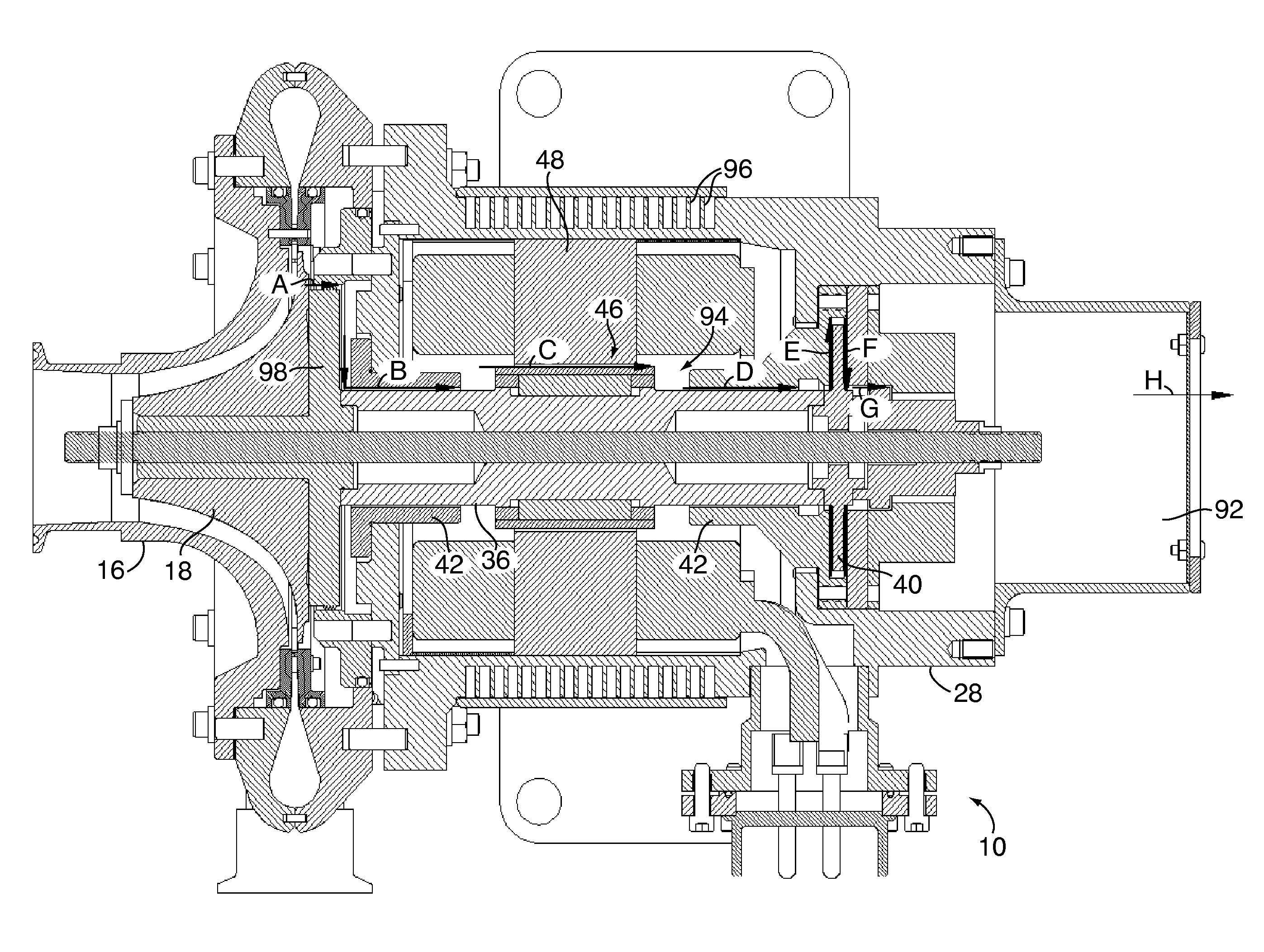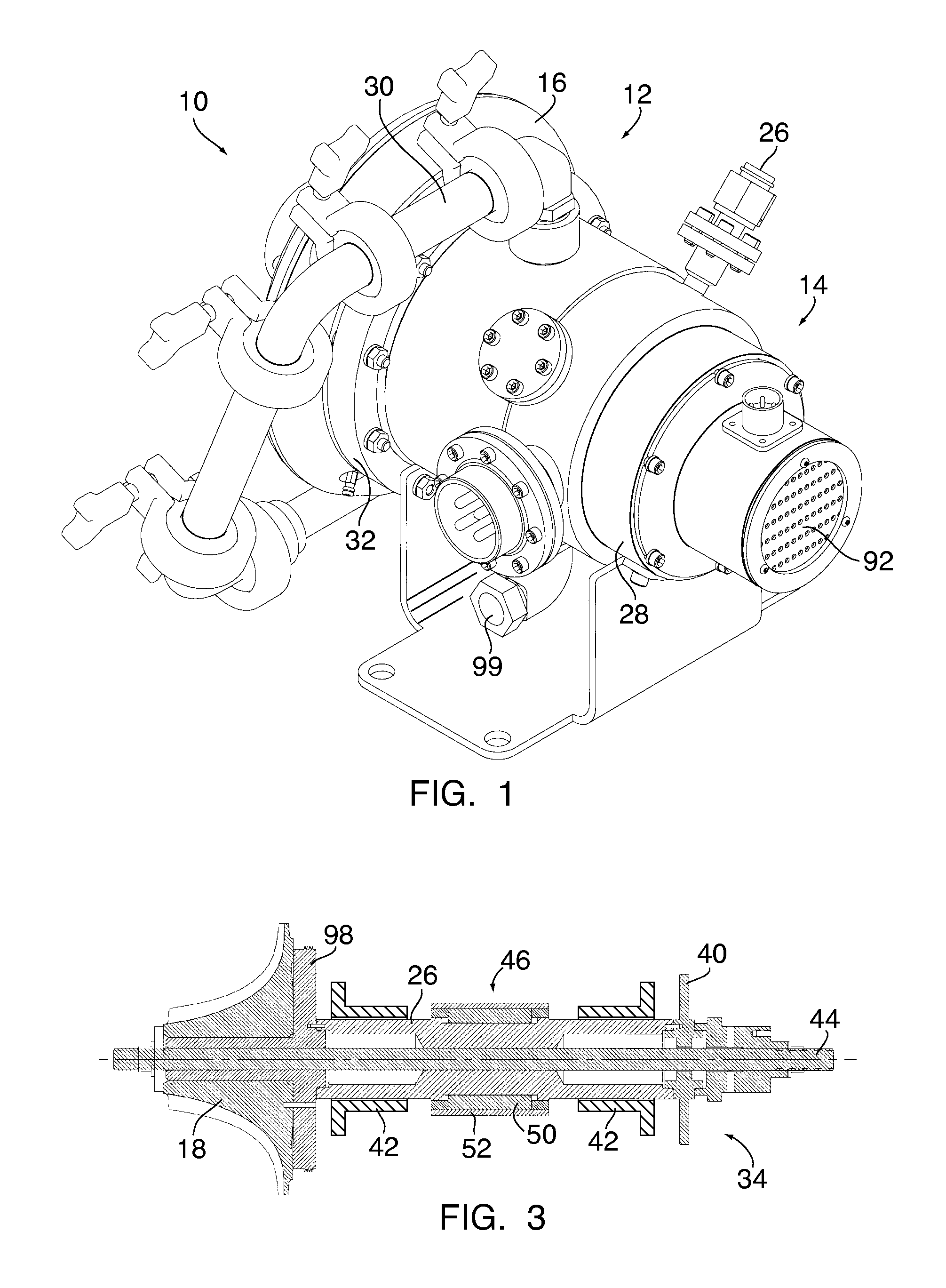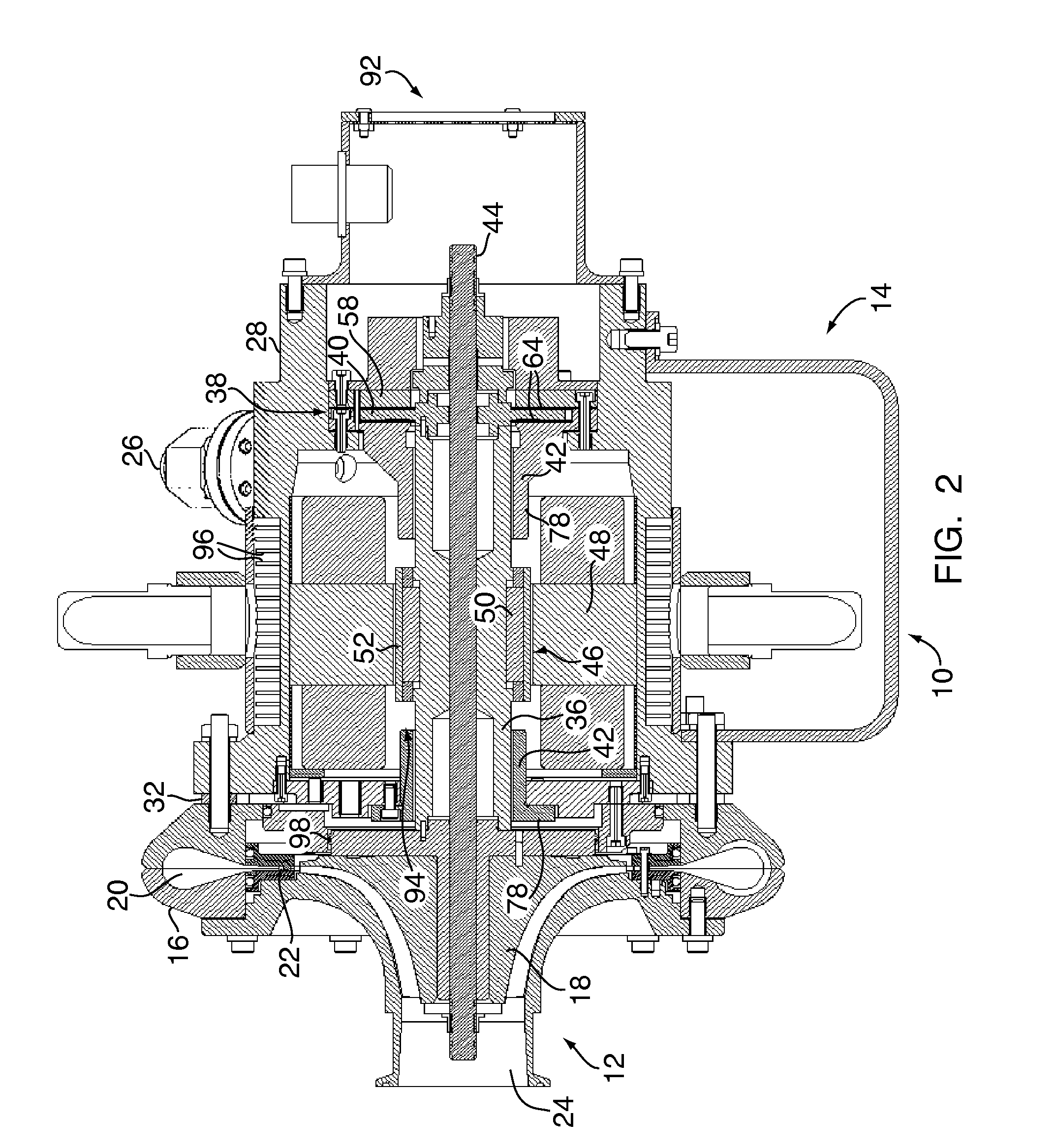Turboalternator with hydrodynamic bearings
a technology of hydrodynamic bearings and alternators, which is applied in the direction of electric generator control, separation process, liquid degasification, etc., can solve the problems of oil contamination of process gas, unreliable oil-lubricated bearings used in the device of u.s. pat. no. 5,045,711, and other problems, to achieve the effect of improving system overall efficiency, recovering energy, and recovering energy
- Summary
- Abstract
- Description
- Claims
- Application Information
AI Technical Summary
Benefits of technology
Problems solved by technology
Method used
Image
Examples
Embodiment Construction
[0042]The present invention is directed to a power generating system for recovering energy stored in a process gas. A perspective view and cross-section of an exemplary turbine-driven alternator in accordance with the present invention, generally designated by reference numeral 10 and hereinafter referred to as “turboalternator 10”, are illustrated in FIGS. 1 and 2, respectively. Turboalternator 10 is preferably a small, high efficiency, oil-free device that can be used in various applications, such as for compressed air energy storage, waste gas energy recovery, pressure letdown, gas liquefaction, and organic Rankine cycles.
[0043]The turboalternator 10 generally comprises a turbine 12 and a generating device 14, such as an alternator or a generator. In general, the turboalternator of the present invention operates the same regardless of whether the generating device is an alternator or a generator. Hereinafter, the generating device 14 is described with reference to a generator. Ho...
PUM
| Property | Measurement | Unit |
|---|---|---|
| temperature | aaaaa | aaaaa |
| energy | aaaaa | aaaaa |
| electrical energy | aaaaa | aaaaa |
Abstract
Description
Claims
Application Information
 Login to View More
Login to View More - R&D
- Intellectual Property
- Life Sciences
- Materials
- Tech Scout
- Unparalleled Data Quality
- Higher Quality Content
- 60% Fewer Hallucinations
Browse by: Latest US Patents, China's latest patents, Technical Efficacy Thesaurus, Application Domain, Technology Topic, Popular Technical Reports.
© 2025 PatSnap. All rights reserved.Legal|Privacy policy|Modern Slavery Act Transparency Statement|Sitemap|About US| Contact US: help@patsnap.com



